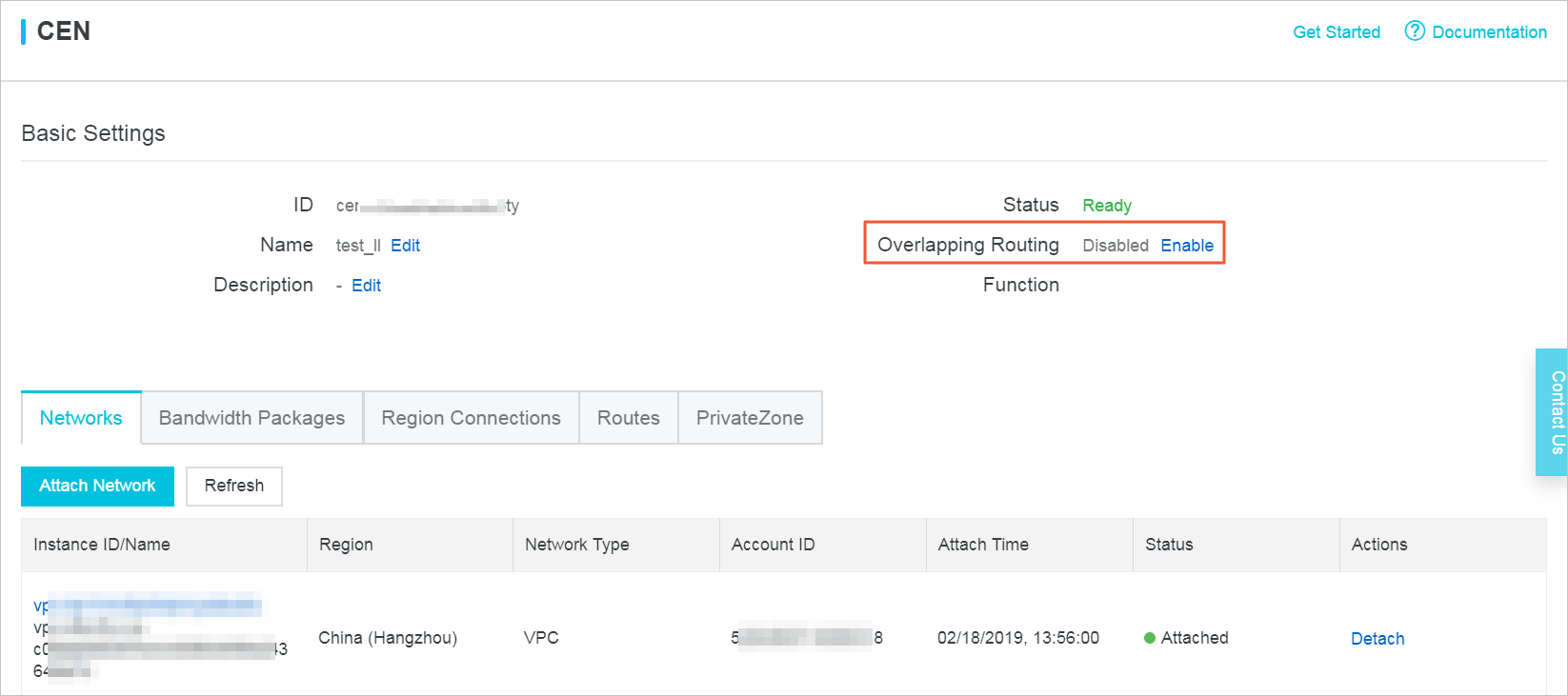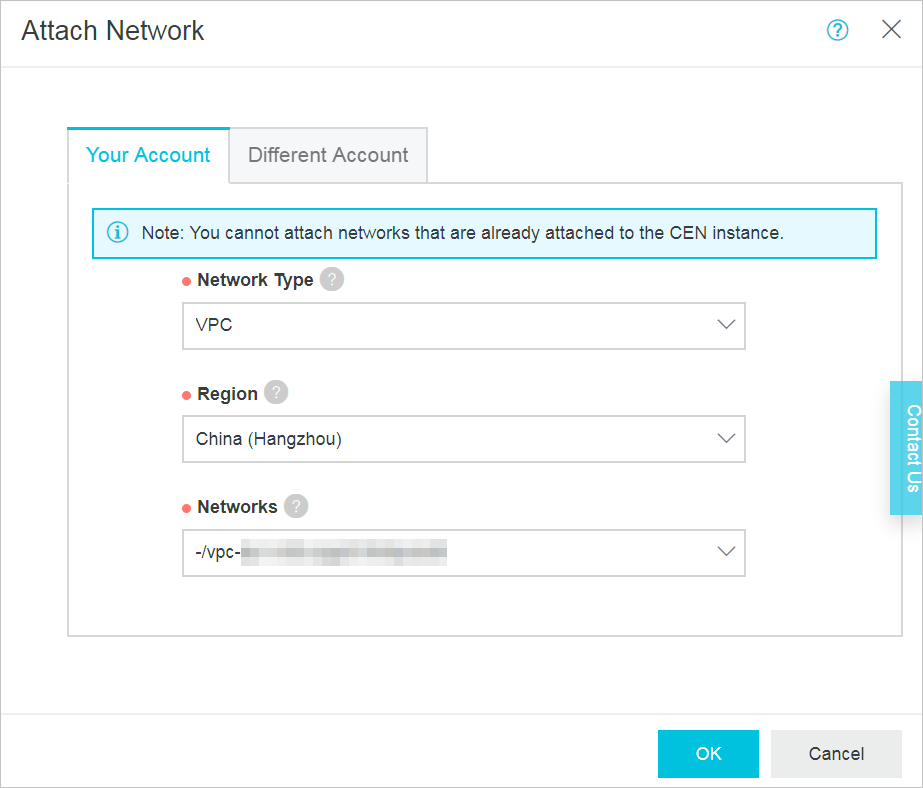This topic describes how to migrate a virtual private cloud (VPC) from a peering connection in Express Connect to a Cloud Enterprise Network (CEN) instance. CEN allows you to establish private network connections between VPCs or between a VPC and a data center. CEN can automatically advertise and learn routes to accelerate network convergence and improve network quality in inter-network communication scenarios. This enables networks to communicate with each other.
Prerequisites
Overlapping routing is enabled for the CEN instance that you want to use, as shown in the following figure. For more information, see Enable overlapping routing.
Procedure
- If you do not have a CEN instance, create one and attach the VPC that you want to migrate to the CEN instance. For more information, see Create a CEN instance.
- Attach the VPCs that you want to migrate to the CEN instance. For more information,
see Attach a network instance.

- If you want to enable inter-region network communication, purchase a bandwidth plan and allocate bandwidth to inter-region connections. For more information, see Purchase a bandwidth plan and Configure bandwidth for cross-region connections.
- If you have added routes that point to Elastic Compute Service (ECS) instances, virtual private network (VPN) gateways, or high-availability virtual IP addresses (HAVIPs), you must advertise these routes to the CEN instance in the CEN console. For more information, see Advertise routes to CEN.
- Check the routes of the VPC.
The static routes of a peering connection have higher priorities than the dynamic routes of the CEN instance. If static routes of the peering connection are retained on the CEN instance, the CEN instance cannot learn duplicate static routes or routes that are longer than the static routes. The system prompts you if overlapped routes are detected.
After you attach the VPC to the CEN instance, you can log on to the CEN console, click the ID of the CEN instance on the Instances page, and then click the Routes tab to check whether routes of the VPC are overlapped.
If routes are overlapped, you can migrate the VPC by using the following methods:- Delete the routes
Delete the routes of the peering connection in the VPC console. The CEN instance then automatically learns and advertises routes. The deletion of the routes causes transient connections. For more information, see Add and delete route entries.
Notice The duration of the transient connection varies based on the number of CEN routes. For important business scenarios, we recommend that you use the following method to smoothly migrate the VPC. - Split the routes
Split the routes of the peering connection into several routes. After the CEN instance learns the routes of the peering connection, delete the routes that are split from the original routes. This method ensures smooth migration.
- Delete the routes
- Migrate the overlapped routes.
The following figure shows how to migrate overlapped routes. After you attach the VPC to the CEN instance, the VPC retains the route that points to 172.16.0.0/16. However, the route of the peering connection that points to 172.16.1.0/24 cannot be learned because the route is longer than the one that points to 172.16.0.0/16. The routes are overlapped.
 In this case, you must split the route that points to 172.16.0.0/16 into longer routes that point to the following CIDR blocks: 172.16.1.0/25 and 172.16.1.128/25.
In this case, you must split the route that points to 172.16.0.0/16 into longer routes that point to the following CIDR blocks: 172.16.1.0/25 and 172.16.1.128/25.- Log on to the VPC console.
- In the top navigation bar, select the region where the VPC is deployed.
- In the left-side navigation pane, click Route Tables. On the Route Tables page, click the ID of the route table that you want to manage.
- On the Custom Route tab, click Add Route Entry to add two routes whose destination CIDR blocks are 172.16.1.0/25 and 172.16.1.128/25.
The next hops are the router interface of the peering connection.

- After you add the preceding two routes, delete the route that points to 172.16.0.0/16.

- Refresh the CEN route list to check whether the route that points to 172.16.1.0/24
is learned.

- After the routes in the CEN instance take effect, delete the routes that point to 172.16.1.0/25 and 172.16.1.128/25. The VPC is smoothly migrated to the CEN instance.